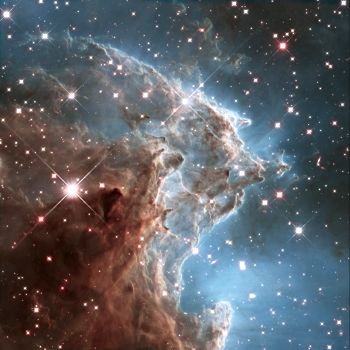Feedback archive → Feedback 2014
Adam and Eve: their lifespans and eternal destinies
Answering questions about the length of time before the Fall and where Adam and Eve will spend eternity.
Today’s feedback features questions about Adam and Eve. First, we address whether they went to heaven or hell. Second, we explain why Adam could not have existed for millions of years before the Fall.

Ross N. asked:
Can we know from The bible whether Adam and Eve were forgiven and are in heaven today or died in their sin and are in hell today.
Regards
Ross
CMI’s Keaton Halley responds:
Hi Ross,
Thanks for the question.
I don’t see anything in the Bible that gives us a definitive answer about the salvation of Adam and Eve, but we can examine what the text says about their lives to see if that gives us any clues. For example, Eve certainly appears to have had some measure of faith based on the things she said when she bore children in Genesis 4:1, 25. We also know that Adam and Eve together followed God’s command to multiply after the Fall, and no other major act of disobedience on their part is mentioned, in contrast to some of their descendants.
Next, we see that Cain and Abel somehow picked up the idea that they should make offerings to God, and that God holds Cain accountable for doing so improperly. It’s admittedly a bit speculative, but it seems natural to think that the second generation would have received instruction about sacrifices from Adam and Eve, who in turn received it from God. Perhaps God set the pattern when he clothed Adam and Eve with animal skins after they had sinned (Genesis 3:21).
Of course, it’s entirely possible that all of the above is true and yet Adam and Eve still lacked saving faith. But I think these observations paint a fairly positive picture of Adam and Eve, so I would lean toward the view that they are in heaven. At the same time, I wouldn’t be dogmatic about it. We can’t really say for sure, not until those of us who have trusted in Jesus get to heaven ourselves.
Hope that helps. Take care,
Keaton Halley
Andrew G. wrote:
I understand that according to Genesis 5:5, Adam lived to 930 years old. However, how do we know when he started “living”? For instance, since death entered the world through sin (Romans 5:12), did Adam begin “living” at the point of sin, or at the point God brought him from the dust? I find it difficult to reconcile why God would create an already aged universe, which is revealed by the distance of stars, galaxies etc. Why would God create stars that are millions of light years away, cut the time it would take for the light to reach the earth, and have it shine on an earth that is only 6,000 years old? This leads me to believe that Adam and Eve could have potentially “existed” for millions of years before sinning, and thus, “lived” another 930 years from the point of sin to their death.
CMI’s Keaton Halley responds:
Hi Andrew,
Thanks for writing in with your question.
I don’t see any reason to think that Adam began to live once he sinned. That would be an odd and idiosyncratic definition of “living”. Adam was walking and talking and married to Eve before he sinned, so he was clearly alive. In fact, the text explicitly says that “the man became a living creature” when God “breathed into his nostrils the breath of life” (Genesis 2:7). I’m sure his ‘birthdays’ were counted from this time.
Also, we have written previously about how the Fall must have occurred pretty soon after creation week. Adam and Eve were instructed to “multiply and fill the earth” (Genesis 1:28), and in their unfallen state they would have been both willing and able to comply. Surely they didn’t wait for millions of years before conceiving their first child. But their firstborn, Cain, was born with a sin nature, so he must have been conceived after the Fall. Thus, the sequence is: Creation—Fall—Cain. And so, because Cain happened shortly after Creation, the Fall must have too.

Now, as you admit, your motivation for postulating such an outlandish (and, frankly, biblically untenable) scenario is that you don’t know how to reconcile 6,000 years with distant starlight. But I encourage you to read the things we’ve published on this subject. If you read our materials, you’ll discover that while we do think God created the universe in a mature state (Adam was full grown, etc.), we do not believe God created with a deceptive ‘appearance of age’. For example, because we see stars exploding farther away than 6,000 light years, we would not say that God created fictional images in the sky which are disconnected from real exploding stars. No, the images we see represent real events that occurred in history. But this does not prove the universe is billions of years old. Creationists have proposed a number of theories to explain how we can see distant stars in a young universe. I recommend you start with chapter 5 of The Creation Answers Book: How can we see distant stars in a young universe? Then, for more details you could read the relevant articles on our Astronomy Q&A page. Or pick up some of our books and DVDs that deal with this subject. But even if we never get a definitive and satisfying answer on how to explain distant starlight, I believe we should take God at His word about the young age of the universe, keeping in mind that He knows far more about physics than we do.
“All these things my hand has made, and so all these things came to be, declares the Lord. But this is the one to whom I will look: he who is humble and contrite in spirit and trembles at my word.”—Isaiah 66:2
Hope that is helpful to you.
Sincerely,
Keaton Halley








Readers’ comments
Comments are automatically closed 14 days after publication.